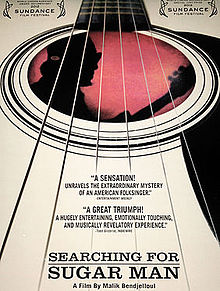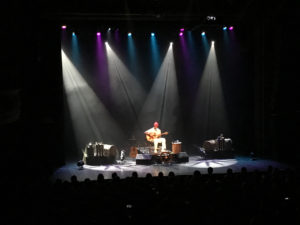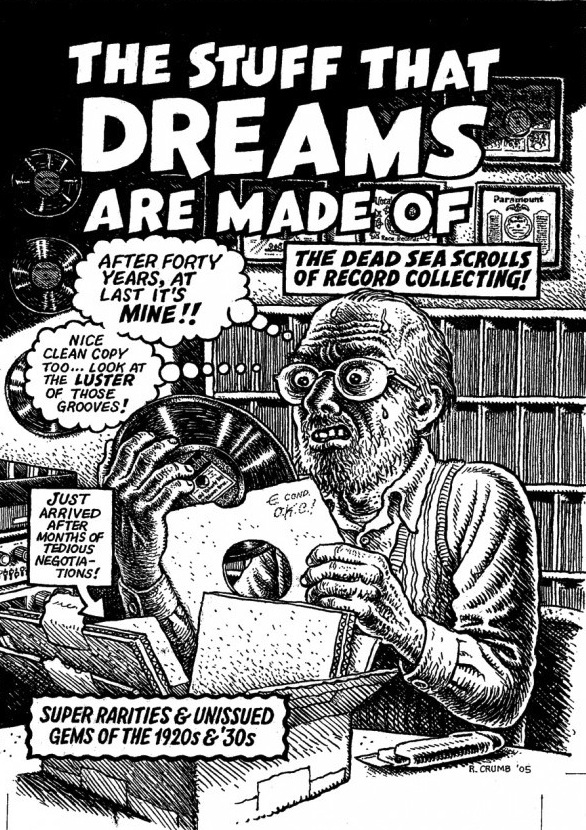Damn the Beasties knew how to dig crates! Bottomless and amazing.
Category Archives: Quick Shots
Spotify vs. Apple Music (Why I Can’t Switch)
Finally got around to writing something I’ve wanted to write for years: Why I can’t move to Spotify.
I was open to the experience, but the past two weeks experimenting with Spotify has been pretty disappointing. Game over. iTunes has “gotten†me for 15 years, no reason to jump ship now. I gave it the old college try.
Marvin Pontiac: The Asylum Tapes
“I thought people would be up in arms about pretending to be a black person,” Lurie said in a 2008 interview, “but people were more upset that I pretended to be an insane person.” –2013 John Lurie interview at eMusic
Something seemed fishy about the amazing 1998 The Legendary Marvin Pontiac ‎– Greatest Hits release, on Strange & Beautiful Music. Who was this madman with the lyrical genius of Dylan meets Robyn Hitchcock meets crazy-guy-on-the-corner-by-the-bodega, and where did he come from? How did such an incredible record emerge whole cloth from an artist none of us had ever heard of? Then his biography turned up online, claiming that Pontiac had been:
The son of an African father from Mali and a white Jewish mother from New Rochelle, New York. The father’s original last name was Toure but he changed it to Pontiac when the family moved to Detroit, believing it to be a conventional American name … When his mother was institutionalized in 1936, the father returned and brought the young boy to Bamako, Mali where Marvin was raised until he was fifteen. The music that he heard there would influence him forever.
Plausible? Almost sorta kinda. But why did Pontiac’s voice sound like a more blues-drenched version of New York jazz musician/painter/actor John Lurie (Lounge Lizards)? Oh… because Pontiac was Lurie! Realizing that the whole Pontiac thing was a ruse didn’t diminish the magnetism of that record for me though – it amplified it if anything. Went looking for more, but that was it — just the one audio scrapbook.
Until now. Pontiac (who was supposed to have been killed by a bus in 1977!) just dropped a follow-up recording, The Asylum Tapes, allegedly recorded on a donated 4-track deck while he was confined in the Esmerelda State Mental Institution. This time it’s Lurie solo (the first collection was recorded with John Medeski, Billy Martin, G. Calvin Weston, Marc Ribot), but it’s raw, weird, soulful and full of demented wonder.
New Yorker: So what’s Lurie up to with this project? I suppose it’s no more mischievous, really, than an actor singing in character, and many of our most prized artworks goof around with form, testing the permeable membrane between fact and fiction, between art and something else. … Our hunger for the authentic or the unmediated has mostly begotten us a cavalcade of deeply unreliable things, such as Donald Trump, laminate flooring, fake-fake news, artisanal moonshine, and reality television.
Then again:
Reportedly Marvin’s music was the only music that Jackson Pollack would ever listen to while he painted. This respect was not reciprocated.
Not sure The Asylum Tapes will get us any closer to answering hard questions about how Pontiac ended up in the bughouse, but it’s deep, beautiful, soulful, sort of funny, and totally worth your time. Available for streaming on iTunes, Spotify, etc.
Johann Johannsson, Iceberg
Regency Ballroom SF, April 2017
An immaculate reel-to-reel tape deck with two large white reels stands alone on stage. A technician walks in and presses Play. A woman speaking the names of random numbers in German, filtered through old radio technology – I recognize it immediately as a recording from the Conet Project, a collection of encrypted WWII spy radio transmissions. After several minutes, the 7-piece string ensemble and JoÌhannsson enter and begin to play, looking like Iceland anthropomorphized, a graceful iceberg of a man.

A repeating bass figure starts to wobble, then disturbingly decompose. Sounds like a technology glitch at first, then slowly becomes intentional, but violins maintain composure. JoÌhannsson rewinds the reel; the deck itself is mic’d, so we hear 1/2″ tape flapping against hardware as it unravels. Now the descending staircase of “Flight from the City,” drawn out for live performance. Strobe lights, but gentle, not like disco. I see bombed out Aleppo suburbs, hopelessness, then something trans-dimensional too, an arrival (hope) over the top. JoÌhannsson goes into ritual mode, holding the next reel from his stack up to the light, acknowledging its hidden contents, then carefully slides it onto its spindle and threads the tape. More spy voices. A bass tone rises up, frequency perfected to vibrate the human spleen, maintained. Something rhythmic, almost, in wide-open fields. JoÌhannsson moves slowly to his piano, something exactly halfway between classical and performance art. The performance is filmic, ethereal, thick, but with plenty of open air. You want to close your eyes, but can’t. JoÌhannsson threads another tape.
Seu Jorge Plays Bowie at Regency
Still reeling from last night’s Seu Jorge performance of David Bowie songs from original recording of Wes Anderson’s “Life Aquatic with Steve Zissou.” Twelve years later, and almost a year after David Bowie’s death, Jorge is touring solo with his collection of Portugese-language Bowie covers, as fresh and raw as they were back then. Surrounded by things found in the sea and with a captain’s wheel center-stage, underlit by small flames and overhead lights projecting slowly spinning turbines, we caught him at SF’s Regency Ballroom, all woodsy and Brazilian street-smart (“In case you didn’t know, black men in Brazil don’t listen to rock and roll…”). Set list: Changes, Pretty Thing, Rebel Rebel, Starman, Lady Stardust, Rock and Roll Suicide, Suffragette City , Space Oddity, Five Years, Life on Mars, Queen Bitch.
Bowie’s In Space
Proto-Bowie – a very different “Space Oddity” from the version we’re used to hearing. Almost comical in its innocence, but what makes this track so iconic is the that it perfectly captured the fear aspect of space travel, which wasn’t much talked about in the go-for-it Space Era. After seeing this, the Flight of the Conchords tribute makes much more sense – their costume echoes were perfect.
Bowie’s original version of Space Oddity:
Flight of the Conchords’ “Bowie’s in Space” tribute:
Miss you so much, Starman.
Collecting Records Is Not Like Collecting Stamps
“Is it wrong, wanting to be at home with your record collection? It’s not like collecting records is like collecting stamps, or beermats, or antique thimbles. There’s a whole world in here, a nicer, dirtier, more violent, more peaceful, more colorful, sleazier, more dangerous, more loving world than the world I live in; there is history, and geography, and poetry, and countless other things I should have studied at school, including music.”
― Nick Hornby, High Fidelity
What Phish Sounds Like to People Who Don’t Like Phish
Searching for Sugar Man
 About a year ago, while surfing through new additions on rdio, I stumbled on an artist I had never encountered before. That in itself is not unusual, but what surprised me was that the record was so fantastic — there aren’t many fantastic records from the 1970s that haven’t bubbled up to “classic” status over the years. Rodriguez was kind of in the Nick Drake / Tim Buckley vein, but completely off in his own head space. 30 seconds into the first sample, I was engulfed. This guy’s work was on par with the greatest troubadours of his time. How could I never have heard of him?
About a year ago, while surfing through new additions on rdio, I stumbled on an artist I had never encountered before. That in itself is not unusual, but what surprised me was that the record was so fantastic — there aren’t many fantastic records from the 1970s that haven’t bubbled up to “classic” status over the years. Rodriguez was kind of in the Nick Drake / Tim Buckley vein, but completely off in his own head space. 30 seconds into the first sample, I was engulfed. This guy’s work was on par with the greatest troubadours of his time. How could I never have heard of him?
Continue reading Searching for Sugar Man
Robert Crumb on His Insanely Heavy Record Collection
Over at Discaholic Corner, excellent Interview with Robert Crumb on his multi-ton collection of old 78s (more than 6,500 of them, and that’s with constant pruning!
Unfortunately, the site design is so horrible that the article is almost unreadable, but worth it.
Just last night, though, Aline, my wife, made a big Indian dinner for us and eight friends. She makes great Indian food. She suggested that after the meal we all retire to my office and listen to some of those wonderful Indian 78s that I got from the Shah Music Centre in Delhi. I played what I consider some of the most powerful of those records. Aline likes them very much, but a couple of the other women present just wanted to talk, and they involved her in conversation. Their voices just drowned out the music and I wasn’t about to turn up the sound and make it harder for them to talk, or tell them to be quiet. One friend simply fell asleep in his chair while the music played. Others picked up magazines off the coffee table and flipped through them. A vexatious situation, but what can you do? You can’t expect them to have the deep appreciation for the music that you have. You have to consider where they’re coming from, the kind of modern, commercial music they’re used to hearing, the unfamiliar, esoteric strangeness of this old music… Like I said, I mostly enjoy listening when I’m completely alone. I sit on the wicker couch that faces my old hi-fi set up, often I close my eyes while listening. It can be a profound aesthetic experience, if one isn’t too distracted thinking about other records one needs to acquire, stuff like that.


